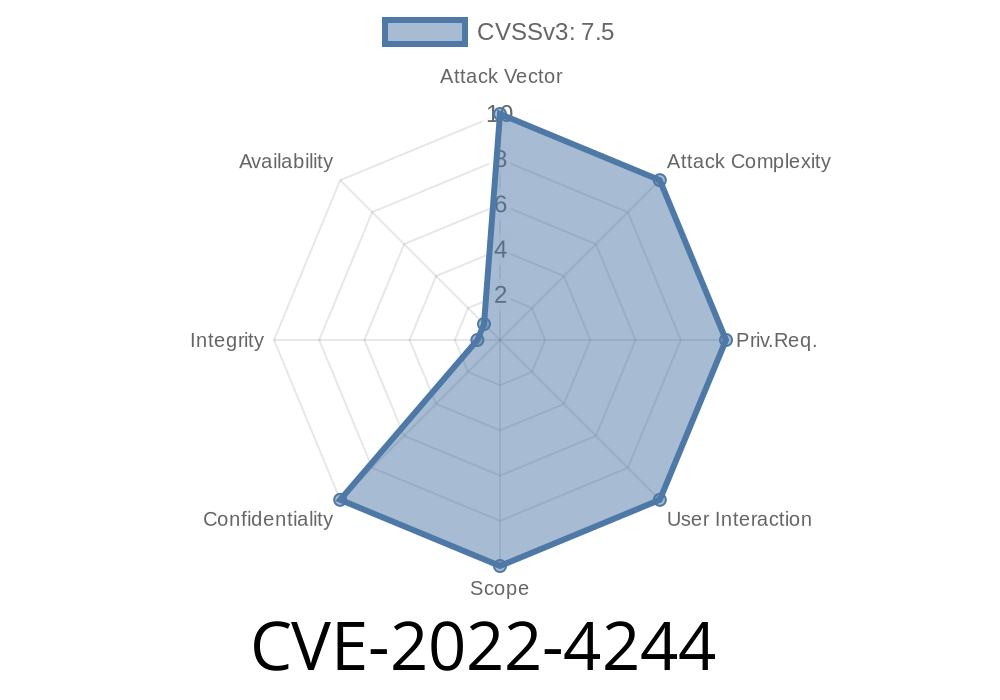A critical flaw, CVE-2022-4244, has been recently discovered in the popular software collaboration platform known as Codeplex-Codehaus. The vulnerability lies in the potential for a malicious attacker to exploit improper handling of file paths, opening the door to a directory traversal attack. This type of attack aims to enable unauthorized access to critical files and directories that reside outside of the intended folder, essentially bypassing the underlying security mechanisms. In this post, we will take a closer look at the nature of the vulnerability, its implications, and an example of how an exploit may be executed on vulnerable systems.
Vulnerability Details
The CVE-2022-4244 flaw lies in the handling of file paths within the Codeplex-Codehaus platform. Specifically, an attacker may manipulate vulnerable code segments to gain unauthorized access to files outside of the intended folder using "dot-dot-slash (../)" sequences, other variations of these sequences, or absolute file paths. Consequently, this may enable the attacker to view, modify, or even delete arbitrary files and directories on the targeted file system. This poses a significant risk to the integrity of the system, potentially allowing unauthorized access to sensitive application source code, configuration files, and other critical system files.
Exploit Example
Given the severity of this vulnerability, we will provide a high-level overview of the exploit using a simple code snippet for illustration purposes:
import os
def vulnerable_function(user_input):
path = os.path.join("secure_folder", user_input)
with open(path, "r") as file:
content = file.read()
return content
user_input = "../secret_folder/secret_file.txt"
print(vulnerable_function(user_input))
In this example, the function "vulnerable_function" is intended to securely read files within the directory "secure_folder." However, by providing the user_input as "../secret_folder/secret_file.txt," an attacker effectively bypasses the secure_folder constraint and gains access to the secret_file.txt contained in the secret_folder. This basic example illustrates the potential for exploitation of CVE-2022-4244 in vulnerable systems.
Original References
For more detailed information regarding CVE-2022-4244, please consider visiting the following trusted resources to gain a deeper understanding of the issue:
1. National Vulnerability Database (NVD) - CVE-2022-4244
2. Common Vulnerabilities and Exposures (CVE) - CVE-2022-4244
3. OWASP Top Ten Project - Path Traversal
Conclusion
In conclusion, CVE-2022-4244 poses a significant threat to the security of systems that utilize Codeplex-Codehaus. A successful directory traversal attack could lead to unauthorized access to sensitive data, alteration of system files, and potential compromise of the affected platform. It is highly recommended to patch any such systems with the latest security updates and to follow best practices for input validation and secure coding techniques.
Timeline
Published on: 09/25/2023 20:15:00 UTC
Last modified on: 10/02/2023 19:28:00 UTC
